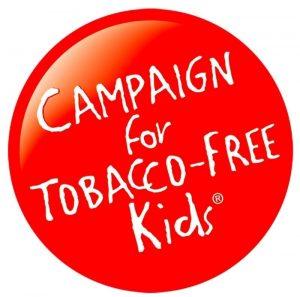National Report: South Carolina Ranks 31st in Protecting Kids from Tobacco
December 11, 2014States Challenged to Join Florida in Reducing Youth Smoking to Record Low
WASHINGTON, DC – South Carolina ranks 31st in the country in funding programs that prevent kids from smoking and help smokers quit, according to a national report released today by a coalition of public health organizations.
The report challenges states to do more by shining the spotlight on Florida, which has cut its high school smoking rate to a record low 7.5 percent. The report details the lives and health care dollars each state could save if it brought its teen smoking rate down to Florida’s.
If South Carolina reduced its high school smoking rate from the current 16 percent to 7.5 percent, it would prevent 118,460 kids from becoming adult smokers, saving 41,430 lives and $2.1 billion in future health care costs. Today in South Carolina, tobacco annually claims 7,200 lives and costs the state $1.9 billion in health care bills.
Other key findings for South Carolina include:
- South Carolina spends $5 million per year on tobacco prevention and cessation programs, which is 9.8 percent of the $51 million recommended by the Centers for Disease Control and Prevention (CDC).
- South Carolina will collect $236.9 million in revenue this year from the 1998 tobacco settlement and tobacco taxes but will spend only 2.1 percent of the money on tobacco prevention programs.
- Tobacco companies spend $194.9 million per year to market their products in South Carolina – 39 times what the state spends on tobacco prevention.
Today’s report, titled “Broken Promises to Our Children: A State-by-State Look at the 1998 State Tobacco Settlement 16 Years Later,” was released by the Campaign for Tobacco-Free Kids, American Heart Association, American Cancer Society Cancer Action Network, American Lung Association, the Robert Wood Johnson Foundation and Americans for Nonsmokers’ Rights.
In 2010, South Carolina took an important step forward by raising the state cigarette tax and increasing funding for tobacco prevention programs from $2 million to $5 million a year. Since then, South Carolina has maintained tobacco prevention funding at $5 million, but this amount is still less than 10 percent of the CDC’s recommendation.
“South Carolina has taken positive steps to reduce tobacco use, but the state is still putting children at risk and costing taxpayers money by failing to properly fund tobacco prevention programs that save lives and health care dollars,” said Matthew L. Myers, President of the Campaign for Tobacco-Free Kids. “Florida’s remarkable progress shows it is within our reach to create a tobacco-free generation. But we need elected leaders in South Carolina to increase funding for proven tobacco prevention programs.”
Nationally, the report finds that:
- Most states fail to adequately fund tobacco prevention and cessation programs. The states will collect $25.6 billion this year from the tobacco settlement and tobacco taxes but will spend only 1.9 percent of it ($490.4 million) on tobacco prevention programs.
- States are falling woefully short of the CDC’s recommended funding levels for tobacco prevention programs. Altogether, the states budgeted just 14.8 percent of the $3.3 billion the CDC recommends. Only two states – Alaska and North Dakota – are funding tobacco prevention programs at CDC-recommended levels.
Evidence shows tobacco prevention and cessation programs work to reduce smoking, save lives and save money. One study found that during the first 10 years of its tobacco prevention program, the state of Washington saved more than $5 in tobacco-related hospitalization costs for every $1 spent on the program.
Tobacco use is the No. 1 cause of preventable death in the United States, killing more than 480,000 people and costing the nation at least $289 billion in health care bills and lost productivity each year.
The full report and state-specific information can be found atwww.tobaccofreekids.org/statereport.














